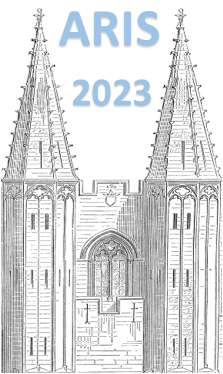Orateur
Description
In the A = 100 region, the dramatic shape change observed for Zr [1-3] and Sr [4-7] (Z = 40 and 38, respectively) is not present in Kr (Z = 36) isotopes [8-10]. The $2_{1}^+$ energies and the B(E2; $2_{1}^+$→ $0_{1}^+$) values vary smoothly across the Kr isotopes but Sr and Zr isotopes display a large jump at N = 60, indicating a significant increase in the ground state deformation of these isotopes. The ν$g_{7/2}$ orbital is filled in the ground states of the krypton isotopes around N = 59 and is thought to lower the energy of the π$g_{9/2}$ orbital and help to drive deformation in this region.
Previous studies in this region have shown a smooth onset of deformation in Kr isotopes at N = 60 [9,10] and evidence of a new oblate structure coexisting with the prolate ground state [11]. Accurately predicting ground-state spins and parities of odd-mass isotopes in this region is challenging due to the large valence space, and lack of ESPE data and accurate shell-model interactions. The single-particle energy differences and spectroscopic factors extracted from neutron adding reactions will provide a more complete experimental picture of the underlying single-particle configurations, which will allow for comparison to modern shell-model calculations [12] that try to describe the onset of deformation around A = 100.
The evolution of neutron single-particle properties and their role in the onset of deformation towards N = 60 in the neutron-rich Kr isotopes has been studied via the one-neutron transfer reactions $^{92,94}$Kr (d,p). These were performed in inverse kinematics at an energy of 7.5 MeV/u using the ISOLDE Solenoidal Spectrometer at ISOLDE, CERN. The main goals are to determine the energy difference between the 2ν$s_{1/2}$ and 0ν$g_{7/2}$ orbitals below N = 60 using the $^{92,94}$Kr (d,p) reactions to identify the likely Δ$\ell$ = 4 transfer to the 7/2$^+$ state. Preliminary results obtained from the October 2022 experiment will be presented.
References:
[1] F. Browne et al., Phys. Lett. B 750, 448 (2015).
[2] J. E. García-Ramos and K. Heyde, Phys. Rev. C 100, 044315 (2019).
[3] P. Spagnoletti et al., Phys. Rev. C 100, 014311 (2019).
[4] F. Buchinger et al., Phys. Rev. C 41, 2883 (1990).
[5] E. Clément et al., Phys. Rev. Lett. 116, 022701 (2016).
[6] A. Chester et al., Phys. Rev. C 96, 011302 (2017).
[7] S. Cruz et al., Phys. Rev. C 100, 054321 (2019).
[8] M. Keim et al., Nucl. Phys. A 586, 219 (1995).
[9] M. Albers et al., Phys. Rev. Lett. 108, 062701 (2012).
[10] M. Albers et al., Nucl. Phys. A 899, 1 (2013).
[11] T. R. Rodríguez, Phys. Rev. C 90, 034306 (2014).
[12] T. Togashi et.al., Phys. Rev. Lett. 117, 172502 (2016).

